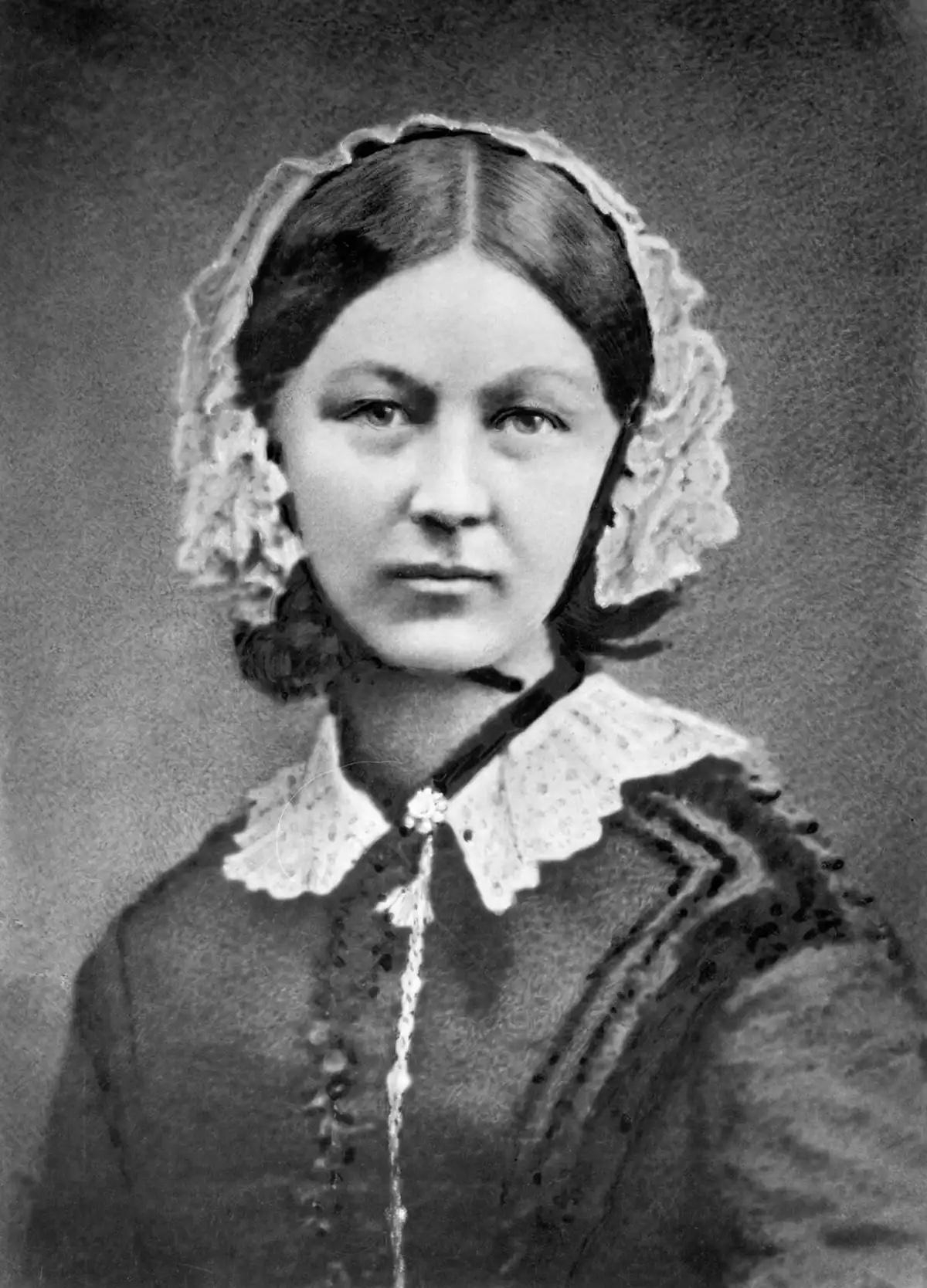How Florence Nightingale changed women’s lives forever
In Murder at Merewood Hospital, Sister Helen Hopgood is the
last nurse in a temporary military hospital that must close – even though casualties
remain.
At the start of the Great War, Helen left behind the comfort
of her nursing quarters at the Nightingale School in London for a post in a field
hospital in northern France. Five years later, in June 1919, her war is still not over.
The Nightingale School at St Thomas’ Hospital was opened in
1860 after a public fund for training nurses was set up in Florence Nightingale’s
honour.
While Florence Nightingale is mainly remembered for her
revolutionary work as a nurse in the Crimean War, her influence extends way
beyond the nineteenth century.
She died in 1910 at the age of 90, having written around 200
books, pamphlets and articles and over 14,000 letters. It’s this legacy that transformed
the way nursing care was delivered during future conflicts – and revolutionised how
patients were treated in hospitals and at home.
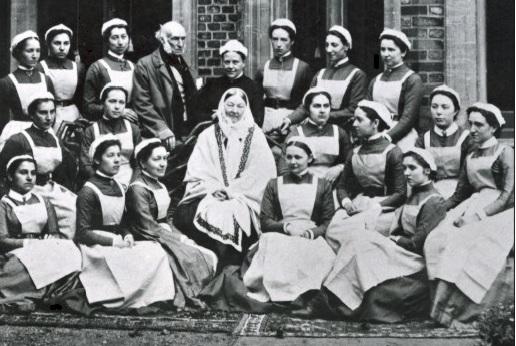
Florence Nightingale with nurses from the Nightingale Training School
Transforming nursing in the First World War
The First World War was the start of a new era of military
nursing – and it was heavily influenced by what Florence had learned sixty years before during the Crimean War.
When war was declared in August 1914, vast numbers of women
volunteered for military service. Due to modern warfare, such as the use of
tanks, machine guns and chemical weapons, nurses in the First World War had to
deal with injuries not seen in previous wars. As a result, temporary field
hospitals were set up as near to the fighting as possible.
As part of a Voluntary Aid Detachment, civilian women from
poor and wealthy backgrounds worked with professional nurses who acted as
mentors to provide nursing care for military personnel. Several aristocratic women set up independent field hospitals in war-torn
France.
When Florence was growing up, nursing was only undertaken by
working-class women in unsanitary conditions. Hospitals could be dangerous
places, and nurses had a reputation for drunkenness.
When Florence and her team of nurses set sail for the
Crimea, she wanted to make nursing a respectable profession. Her nurses wore uniforms, and she insisted doctors and military men treated them with respect.
She succeeded in making nursing a reputable occupation for
women.
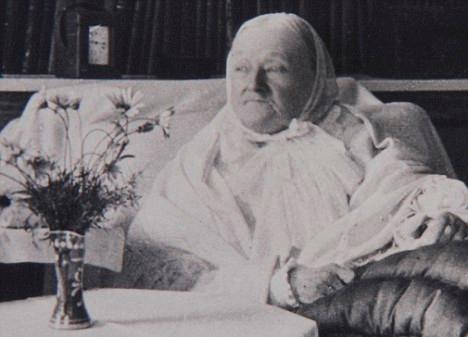
Florence Nightingale pictured shortly before her death in 1910
Pioneering the use of statistics
As well as nursing, Florence educated her readers on the
importance of sanitation, hygiene – and statistics.
During the Crimean War, Florence had seen tens
of thousands of soldiers die – most from preventable diseases rather than on
the battlefields. She gathered data on these deaths and used a graphical
approach to show statistics at a glance.
England and Her Soldiers is a literary account of the
Crimean War by Harriet Martineau based on Florence’s statistical studies of
mortality during the conflict.
The two women understood that readers absorbed information
faster if it was presented graphically rather than in words.
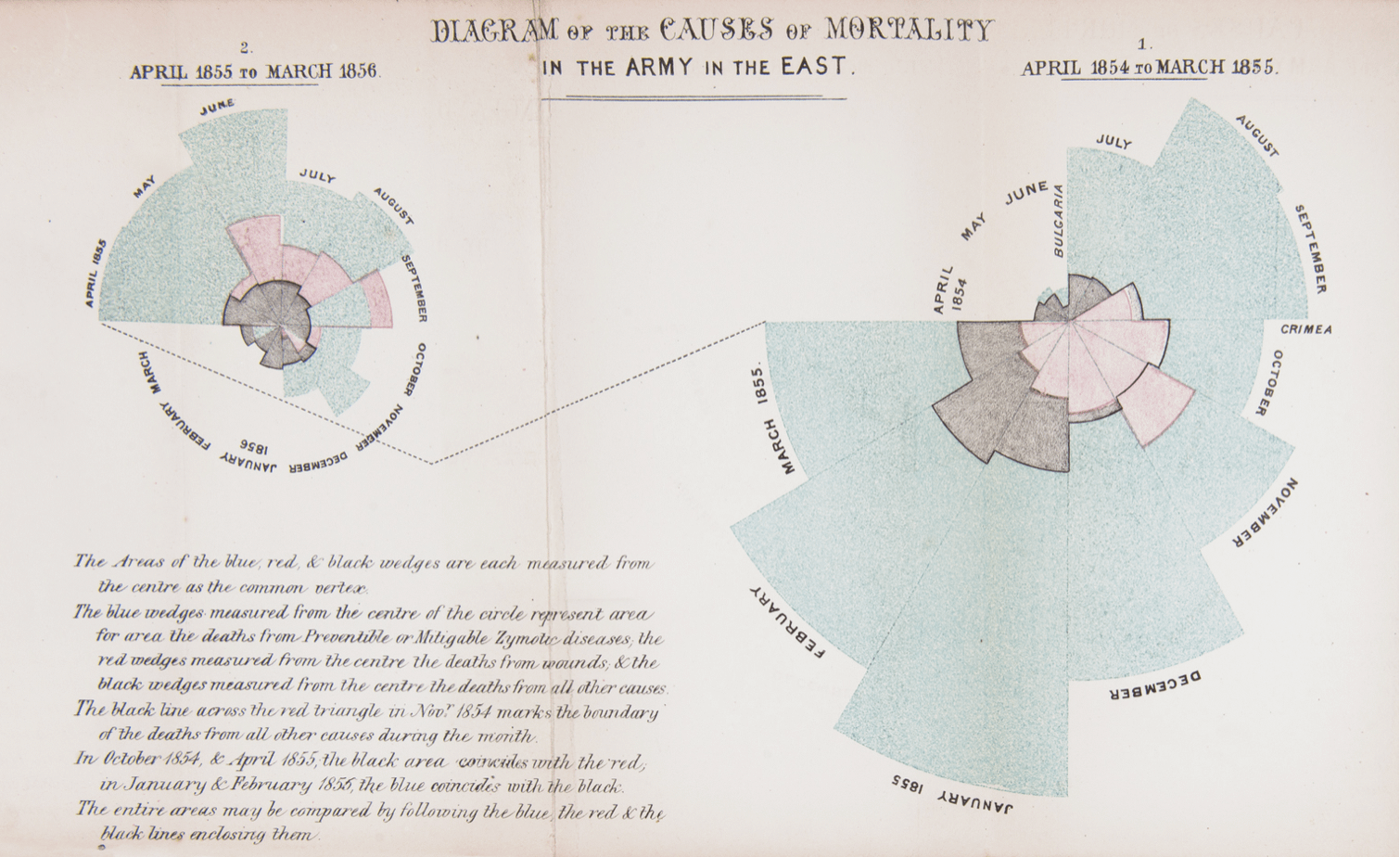
Florence’s ‘Rose Diagram’, to illustrate the rate of mortality, pioneered an approach that’s still used today.
Changing how we care for the sick
In 1860, Florence's book Notes on Nursing became
an instant bestseller. It was translated into many different languages and read
by Queen Victoria.
It was popular because it was written to help ordinary women care for their families. Florence explained the importance of cleanliness,
warmth, fresh air, light and correct diet.
Combining physical and mental wellbeing is something we now
take for granted nowadays, but it was ground-breaking in Florence’s time.
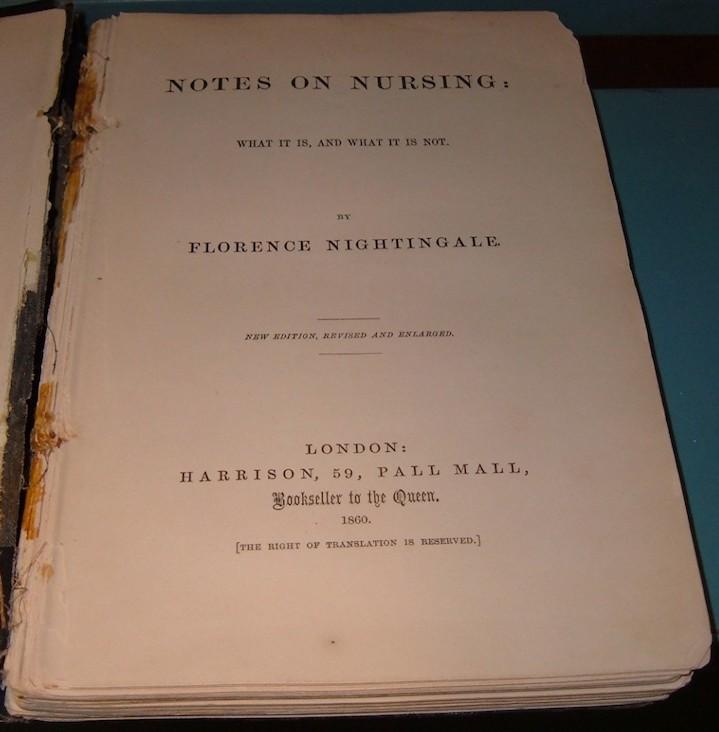
Notes on Nursing: What it is, and what it is not.

